Introduction
The concept of installing a dash cam can seem quite daunting, however it is actually relatively simple with some basic tools and electrical knowledge. In the tutorial below AutoInstruct will show you how to install a front and rear dash cam in your vehicle.
For this tutorial we’re using a MK7 Golf R, and the dash cam is a Blackvue DR650S-2CH with a Power Magic Pro. For LHD models the process is very similar, please see below for more information.
Difficulty Rating
Tools/Parts Required
- 1CH or 2CH Dash Cam – We sell and recommend BlackVue
- Optional: Power Magic Pro
- Cable Ties
- Side Cutters
- Cable Stripper
- x2 Fuse Taps / ‘Add a Circuit’
- Trim Removal Tools
- Torx Driver Set
- Electrical Tape & Stiff Wire (For feeding cables)
Warning
AutoInstruct will not be held responsible for damage to your vehicle or personal injury / death as a result of the information we provide.
Step 1
First we need to choose a suitable mounting location on the front windshield. Power on the camera using the cigarette lighter and check the footage to ensure you are happy with the position. Being a Right Hand Drive (RHD) vehicle we’ve chose to mount the camera behind the left side of the rear view mirror, therefore hiding the camera from the driver’s field of view.
Ensure you leave adequate space between the camera and mirror to allow for movement in the mirror. Once the spot is chosen, stick the camera to the windshield.
Step 5
When feeding the cables we need to ensure we do not obsecure the airbag in the event of a deployment. Essentially this means we never run the cables between the airbag and vehicle occupants.
As a result, the first step is feeding behind the airbag in the A-Pillar. Grasp the pillar near the window seal and gently pull down to make a small gap. Then feed the cables in the direction shown, ensuring you are feeding behind the airbag.
You can then feed the cables along the top of the windshield and into the roof lining. The cables will sit comfortably in place. Plug the cables into the camera and ensure there is adequate cable slack for adjustment. Neaten as required and push the A-Pillar firmly back into position.
Step 8
Continue feeding the rear cable along the window seal and across the B-Pillar. Once at the B-Pillar you can simply push upwards on the roof lining to create a gap. Drop the cable into this gap and then work your way along the rear door, again pulling back on the seal and feeding into the roof lining.
Continue feeding the rear cable along the window seal and across the B-Pillar. Once at the B-Pillar you can simply push upwards on the roof lining to create a gap. Drop the cable into this gap and then work your way along the rear door, again pulling back on the seal and feeding into the roof lining.
Step 12
We now need to feed the wire through either rubber tube in the direction shown. Whilst you can leave the rubber tubes connected to the body, it can be easier to feed the cable if they’re released.
To release them, look from the underside / topside and gently push on the clip, one side holds it in place. Be gentle as these are prone to break.
We now need to feed the wire through either rubber tube in the direction shown. Whilst you can leave the rubber tubes connected to the body, it can be easier to feed the cable if they’re released.
To release them, look from the underside / topside and gently push on the clip, one side holds it in place. Be gentle as these are prone to break.
Step 15
We will now hard wire the dash cam and Power Magic Pro. For RHD vehicles, remove the glovebox using this tutorial. LHD vehicles can simply remove the coin tray next to the drivers knee. To do this simply squeeze the sides of the tray and it should drop down.
We will now hard wire the dash cam and Power Magic Pro. For RHD vehicles, remove the glovebox using this tutorial. LHD vehicles can simply remove the coin tray next to the drivers knee. To do this simply squeeze the sides of the tray and it should drop down.



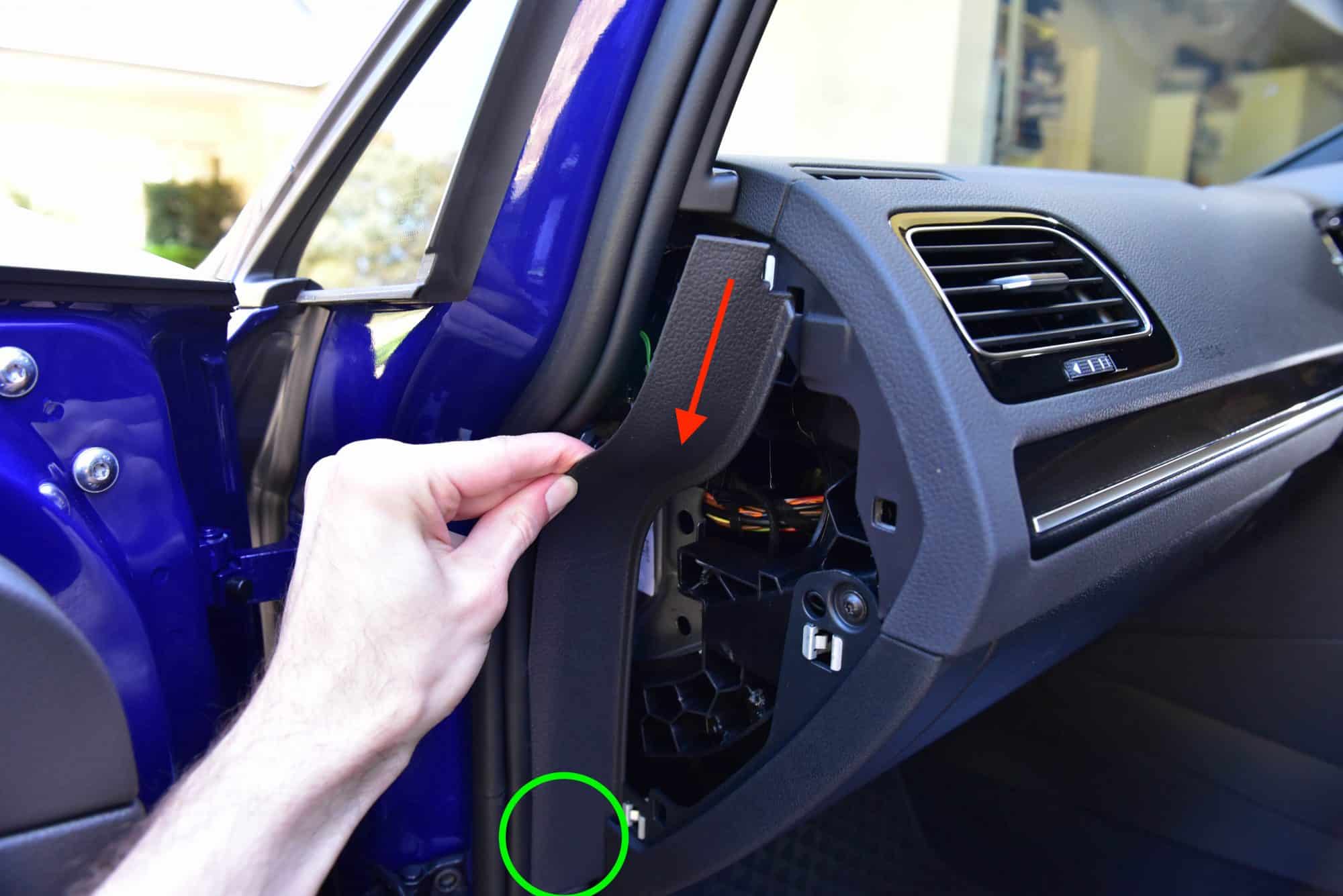


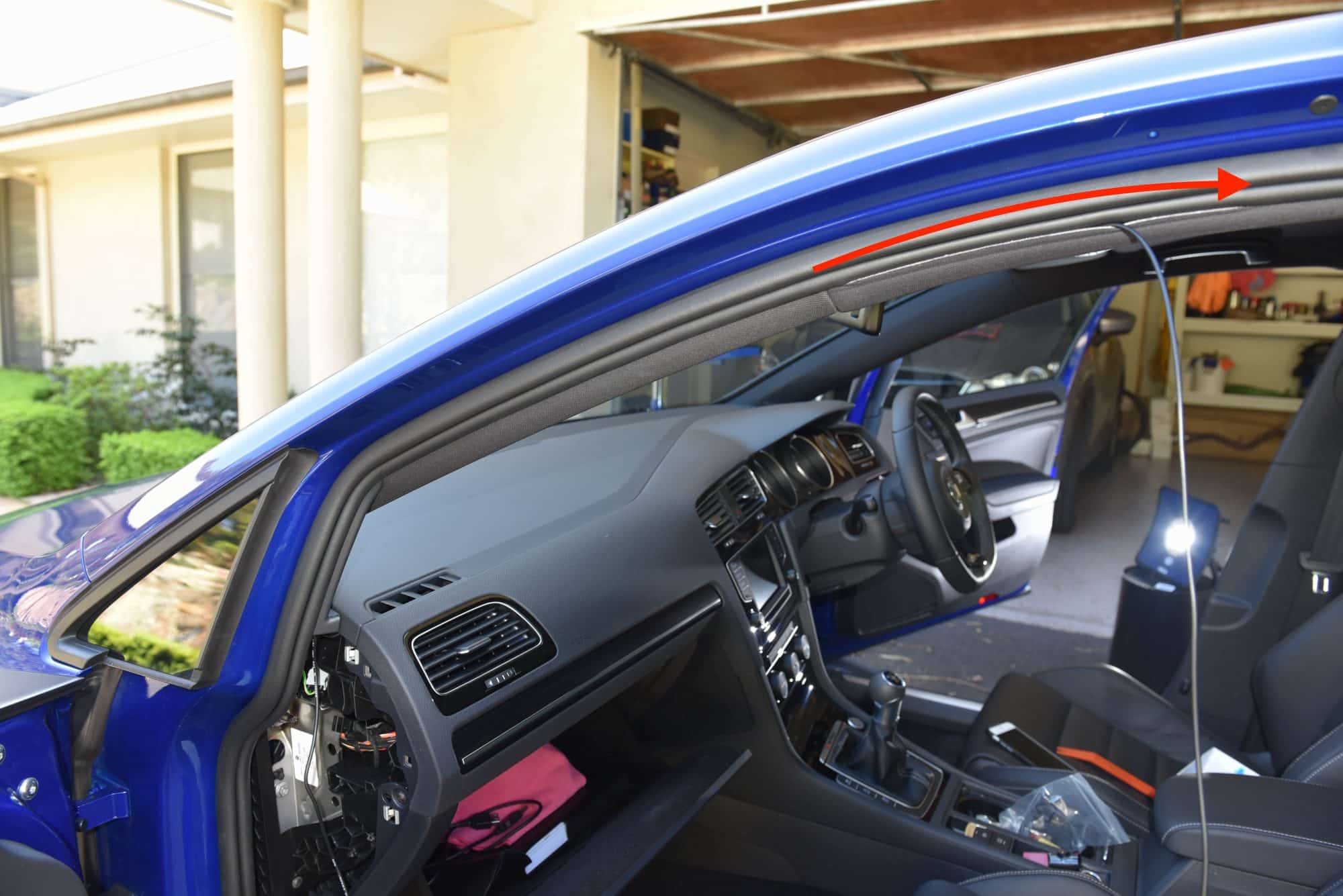
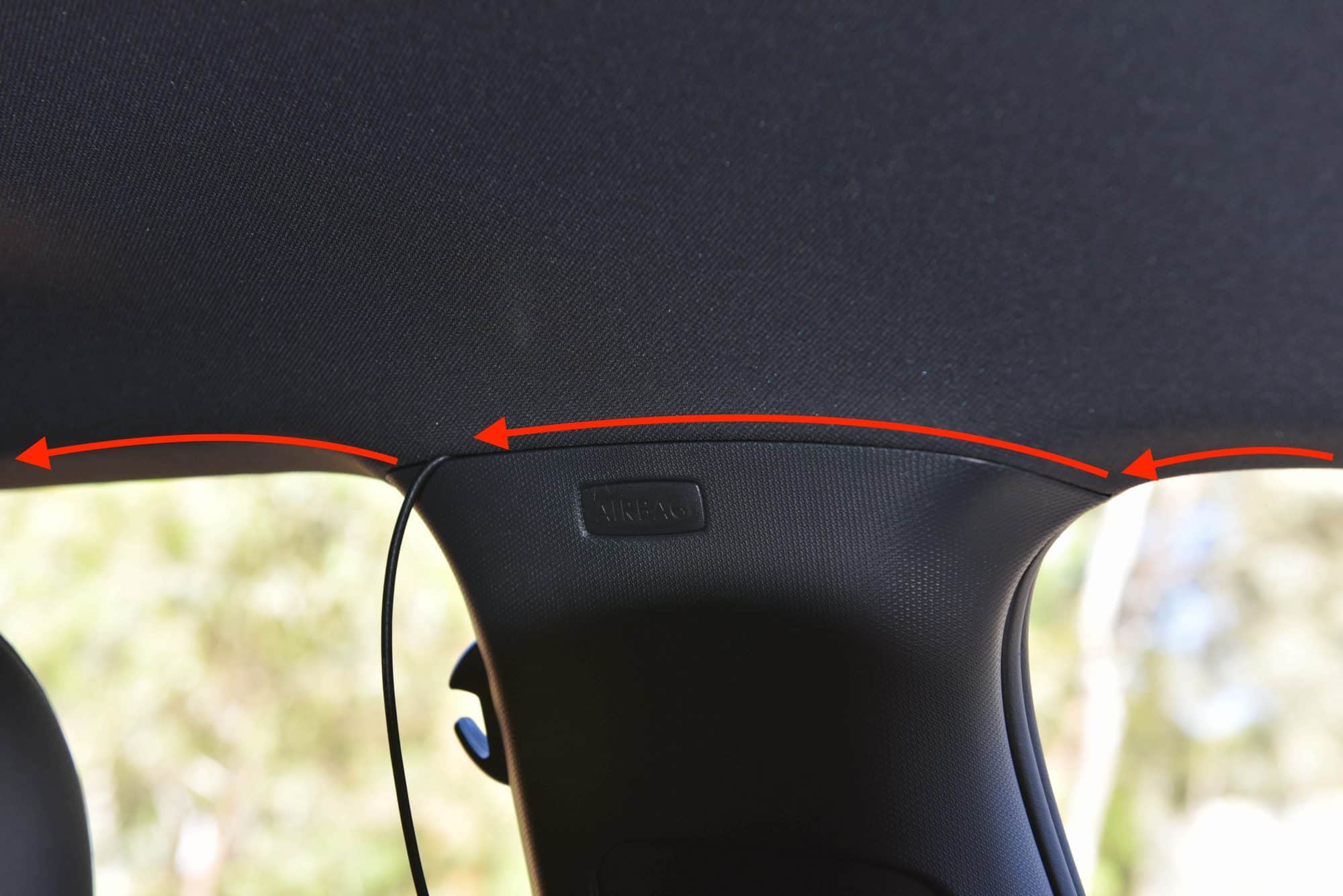




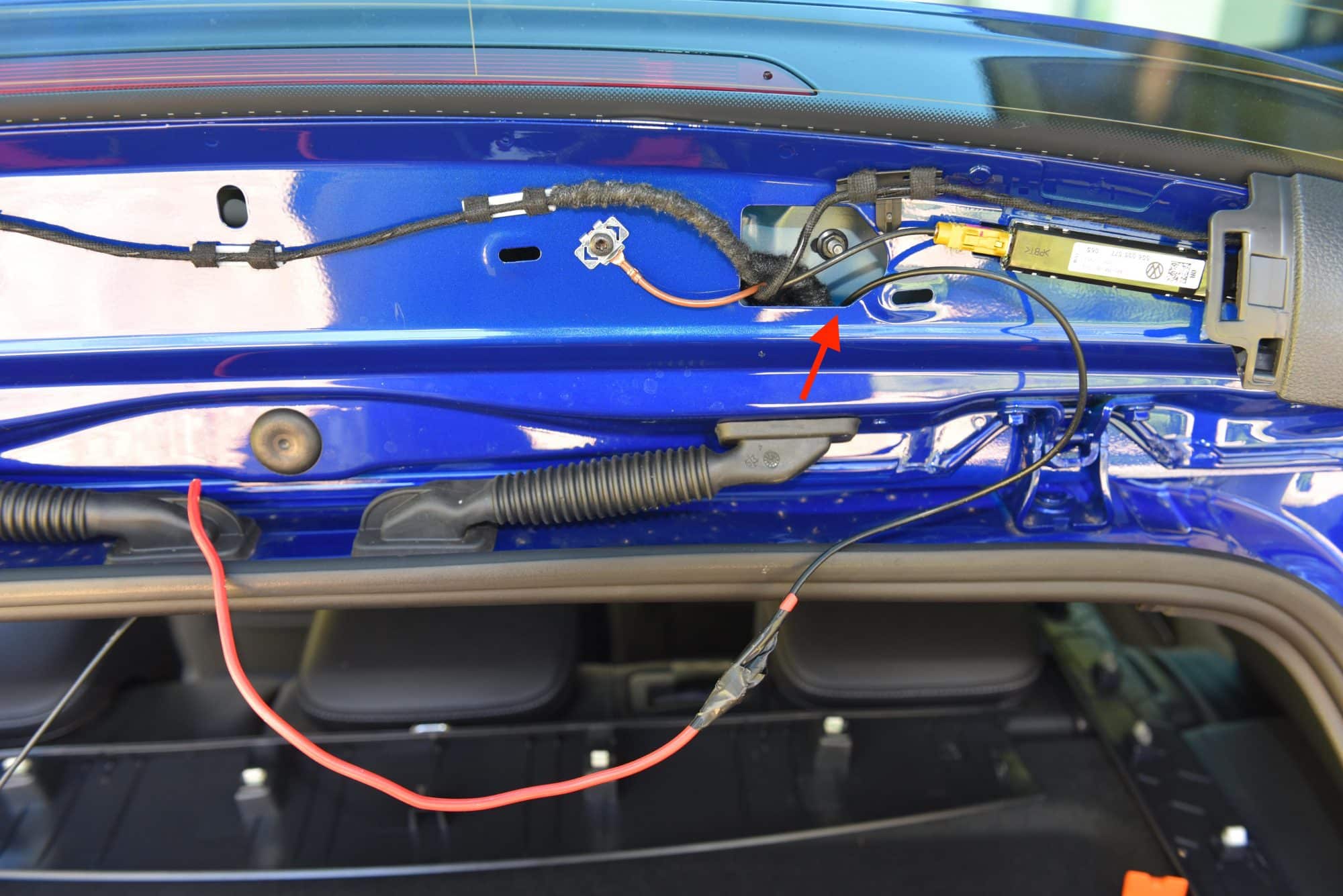




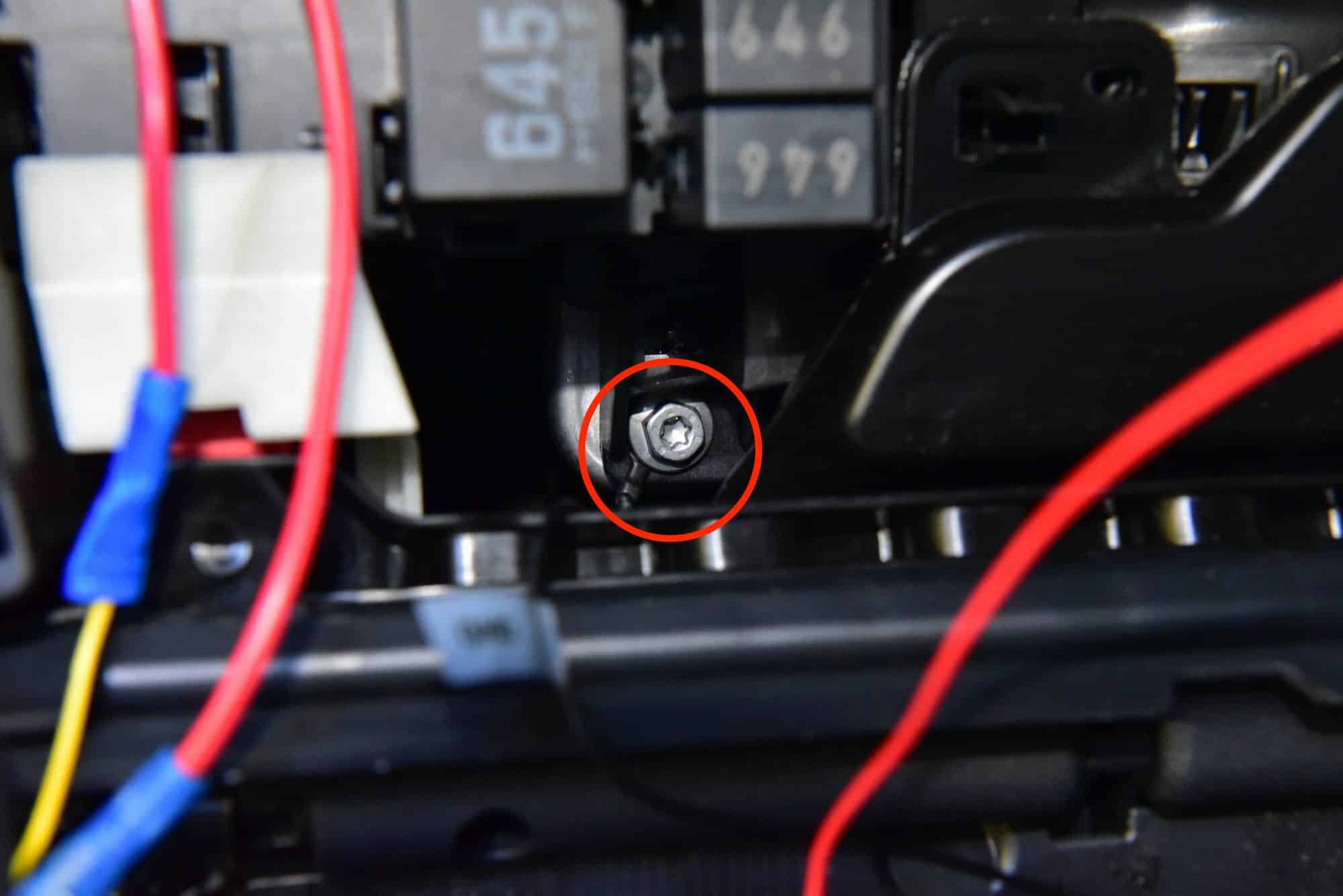

This Post Has 38 Comments
loving your website, thank you.
Great instructions – very handy though in step 5, not sure how to get it to cross at that step without it still fouling the airbag? Are there ‘gaps’ in the airbag sock (that I understand goes from the start of A-pillar all the way to the rear) or is the suggestion to go down the A-pillar nearest to the windscreen, to then go back up? As the photo makes it look like it’s going up into the roof though isn’t that also where the airbag continues to, If that makes sense? Hoping to not have to remove the entire A-pillar and just loosen the top. Thanks
Hello, We just go over the back of the airbag. Hope that answers your question.
Thank you – oh I understand now, it’s clicked for me! I realise now that I need to feed the cable end behind the airbag; I was thinking I could feed the middle of the cable up and under. Thanks, great documentation!
Used this guide to install the Blackvue DR750X for my 2014 Mk7 Golf R. Had no issues with the install. For fuses I used trailer hitch (F44) for BAT and cigarette lighter (F40) for ACC, both with 5amp piggyback fuses. Also note the polarity of the fuse terminals (when in doubt use a multimeter). For grounding point I instead used the dash screw that is located on the side of the glovebox.